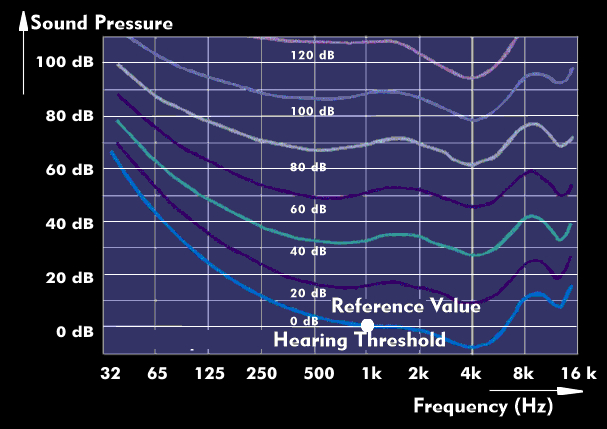range of audibility
The human ear has a frequency- and age-dependent hearing sensation, which is reflected in the hearing characteristics. The audible frequency range is volume-dependent and lies in the frequency range between 20 Hz and 20 kHz in children.
The hearing characteristic changes with different sound levels and has its highest sensitivity at frequencies between 2 kHz and 4 kHz. At these frequencies, hearing reaches a maximum dynamic range up to the pain threshold of about 130 dB.Sounds with higher frequencies than 4 kHz are perceived as quieter, as are lower sounds at the same sound pressure. Furthermore, certain frequencies above 16 kHz and below 30 Hz are not audible.
The perceived loudness, which is expressed in phons, depends on the acoustic signal and its signal frequency. The reference value for sound pressure is 0 dB at a frequency of 1 kHz. Depending on the pitch, signals with the same sound pressure are perceived as being of different loudness. This is illustrated by the lines that have the same sound pressure, the so-called Fletcher-Munson curves, in the auditory characteristics. These curves of equal loudness are called isophones.
The lowest perceivable loudness represents the hearing threshold. The hearing threshold is a frequency-dependent characteristic that represents the lowest perceptible sound pressure in relation to frequency. The highest perceptible loudness is the pain threshold, which is at sound pressures of about 130 dB. The area between the hearing threshold and the pain threshold is called the auditory field.

